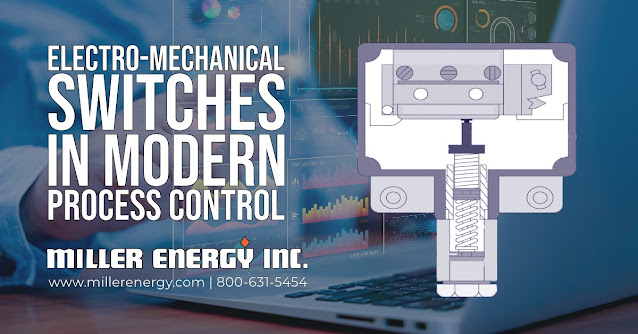Pressure switches are widely used by many industries and within many applications. The basic function of a pressure switch is to detect a pressure change and convert it into an electrical signal function – typically on/off or off/on. Pressure switches may be of electro-mechanical or electronic/solid-state design (see our ONE Series); and while each may have its advantages, arriving at the correct pressure switch for your application is the same.
Set Point & Deadband
Application set point (sp) is the desired value reached at rising or falling pressure at which the micro-switch changes electrical states. Depending upon the pressure switch function, the micro-switch could be wired to open (turn something OFF) or close (turn something ON) when set point is achieved, thereby triggering an event such as an alarm, equipment shutdown, or powering up secondary equipment. Ideally, the set point should fall into the mid 50% of the pressure switch range for best performance including repeatability and long life. On an electro-mechanical pressure switch, set point may be adjusted internally or externally either through blind adjustment or reference dial. An electronic pressure switch would have internal or external adjustment via a key pad and digital display or a handheld programmer.

Deadband (DB) is the on-off differential required to reset the micro-switch. This value may be fixed or adjustable with an electro-mechanical switch and may be up to 100% adjustable on an electronic switch.
Deadband may be an important factor to consider depending upon the application requirements.
System Pressure
Knowing your normal and maximum system pressures will help in selecting a pressure switch with appropriate minimum and maximum operating parameters. Once your set point is established, other factors to consider are vacuum and/or surge pressure that could affect switch operation. This would involve maximum working pressure, over range pressure, and proof pressure specifications of a pressure switch. The relationship between set point and system pressure has a direct effect on switch performance and life.
Electrical Considerations
Micro-switches are available in a variety of configurations. The most common for electro-mechanical pressure switches is 15A, 480VAC SPDT (single pole, double throw). The advantage of a SPDT micro-switch is that it offers wiring flexibility to either open or close on pressure change. Other micro-switches available include 1A with gold contacts, useful when working with a PLC, or at the upper end, 30A when switching certain high voltage heaters or motors. Adjustable micro-switches help with deadband adjustment. A DPDT (double pole, double throw) micro-switch would provide two simultaneous functions off of one micro-switch. If a low-high limit alarm and shutdown were required, there are pressure switches that include two SPDT micro-switches that are independently settable.
An electronic pressure switch would use solid-state relays to change states. Like an electro-mechanical switch, the electronic switch can be programmed to open or close on rising or falling pressure. There are different capacities for switching voltage and current depending upon the application requirements.
Process Media and Wetted Parts
The pressure connection and sensor are known as wetted parts since they come into direct contact with the process media. Sensor material is either elastomer (i.e. Buna-N, Teflon®) or metallic (i.e. Brass, Stainless Steel) with metallic or composite pressure connections. The process media must be compatible with the wetted parts material. Process media temperature should also be considered as each of the different wetted materials would have differing operating properties.
Pressure Switch Mounting
If the unit is to be installed directly onto the process, there are many methods of installation.
Typically a 1/8”, 1/4”, or 1/2” NPT (national pipe thread taper) connection is used with a mating
fitting to secure the pressure switch to the process. There are also straight threaded (SAE, BSPT)
connections, flush mount connections, and sanitary connections. The pressure switch may be
mounted directly in the process line using the threaded connection, a manifold, or flange; or the
enclosure could be bolted to a mounting plate or other plane to secure it. If heavy vibration is
present, you may choose to use a remote diaphragm seal with the pressure switch. The diaphragm
seal mates with the process connection while the pressure switch enclosure is mounted securely
away from the vibration.
Process Environment
It is important to know what type of environment the pressure switch would be installed in – hazardous or ordinary location; indoors or outdoors; exposed to salt air; inside a control panel; in high ambient temperature. These are just some of the factors to consider so the right enclosure type is chosen. Enclosure types come in many shapes, sizes, and materials. They also conform to various industry and third-party approval standards. Electronic switches can be used to replace electro-mechanical switches when SIL is needed for safety applications. There are also electro-mechanical pressure switches without enclosures; typically used in OEM, non-hazardous locations where the environment is benign.
With careful consideration of all the factors listed above, choosing a pressure switch is a snap. If you are at all unsure, please contact
your local United Electric Distributor or
visit the UE Product Selector to find your pressure switch.








